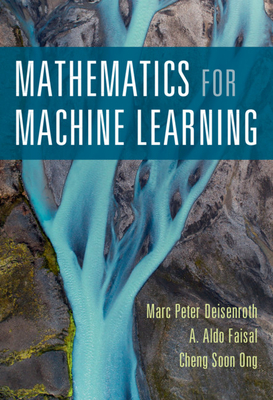Modern Data Mining Algorithms in C++ and Cuda C: Recent Developments in Feature Extraction and Selection Algorithms for Data Science
暫譯: C++ 與 Cuda C 的現代資料挖掘演算法:資料科學中特徵提取與選擇演算法的最新發展
Masters, Timothy
- 出版商: Apress
- 出版日期: 2020-06-06
- 售價: $2,400
- 貴賓價: 9.5 折 $2,280
- 語言: 英文
- 頁數: 213
- 裝訂: Quality Paper - also called trade paper
- ISBN: 1484259874
- ISBN-13: 9781484259870
-
相關分類:
C++ 程式語言、CUDA、Algorithms-data-structures、Data-mining、Data Science
-
相關翻譯:
數據挖掘算法 — 基於 C++ 及 CUDA C (簡中版)
立即出貨 (庫存=1)
商品描述
Discover a variety of data-mining algorithms that are useful for selecting small sets of important features from among unwieldy masses of candidates, or extracting useful features from measured variables.
As a serious data miner you will often be faced with thousands of candidate features for your prediction or classification application, with most of the features being of little or no value. You'll know that many of these features may be useful only in combination with certain other features while being practically worthless alone or in combination with most others. Some features may have enormous predictive power, but only within a small, specialized area of the feature space. The problems that plague modern data miners are endless. This book helps you solve this problem by presenting modern feature selection techniques and the code to implement them. Some of these techniques are:
- Forward selection component analysis
- Local feature selection
- Linking features and a target with a hidden Markov model
- Improvements on traditional stepwise selection
- Nominal-to-ordinal conversion
All algorithms are intuitively justified and supported by the relevant equations and explanatory material. The author also presents and explains complete, highly commented source code.
The example code is in C++ and CUDA C but Python or other code can be substituted; the algorithm is important, not the code that's used to write it.
What You Will Learn
- Combine principal component analysis with forward and backward stepwise selection to identify a compact subset of a large collection of variables that captures the maximum possible variation within the entire set.
- Identify features that may have predictive power over only a small subset of the feature domain. Such features can be profitably used by modern predictive models but may be missed by other feature selection methods.
- Find an underlying hidden Markov model that controls the distributions of feature variables and the target simultaneously. The memory inherent in this method is especially valuable in high-noise applications such as prediction of financial markets.
- Improve traditional stepwise selection in three ways: examine a collection of 'best-so-far' feature sets; test candidate features for inclusion with cross validation to automatically and effectively limit model complexity; and at each step estimate the probability that our results so far could be just the product of random good luck. We also estimate the probability that the improvement obtained by adding a new variable could have been just good luck. Take a potentially valuable nominal variable (a category or class membership) that is unsuitable for input to a prediction model, and assign to each category a sensible numeric value that can be used as a model input.
Who This Book Is For
Intermediate to advanced data science programmers and analysts. C++ and CUDA C experience is highly recommended. However, this book can be used as a framework using other languages such as Python.
商品描述(中文翻譯)
發現各種數據挖掘演算法,這些演算法對於從繁雜的候選特徵中選擇小型重要特徵集或從測量變數中提取有用特徵非常有用。
作為一名認真的數據挖掘者,您經常會面臨數千個候選特徵,用於您的預測或分類應用,其中大多數特徵幾乎沒有價值。您會知道,許多特徵可能僅在與某些其他特徵結合時才有用,而單獨或與大多數其他特徵結合時幾乎毫無價值。有些特徵可能具有巨大的預測能力,但僅限於特徵空間中的小型專門區域。困擾現代數據挖掘者的問題無窮無盡。本書通過介紹現代特徵選擇技術及其實現代碼來幫助您解決這一問題。這些技術包括:
- 前向選擇組件分析
- 局部特徵選擇
- 使用隱馬可夫模型連結特徵和目標
- 傳統逐步選擇的改進
- 名義到序數的轉換
所有演算法都有直觀的理由,並由相關方程和解釋材料支持。作者還提供並解釋了完整的、高度註釋的源代碼。
示例代碼使用 C++ 和 CUDA C,但可以替換為 Python 或其他代碼;演算法才是重要的,而不是用來編寫它的代碼。
**您將學到什麼**
- 將主成分分析與前向和後向逐步選擇結合,以識別一組大型變數的緊湊子集,捕捉整個集合內的最大可能變異。
- 識別可能僅在特徵領域的小子集上具有預測能力的特徵。這些特徵可以被現代預測模型有效利用,但可能會被其他特徵選擇方法忽略。
- 找到一個潛在的隱馬可夫模型,同時控制特徵變數和目標的分佈。這種方法固有的記憶在高噪聲應用中尤其有價值,例如金融市場的預測。
- 以三種方式改進傳統逐步選擇:檢查一組“迄今為止最佳”的特徵集;使用交叉驗證測試候選特徵的納入,以自動有效地限制模型複雜性;並在每一步估計我們迄今為止的結果可能僅是隨機運氣的產物的概率。我們還估計通過添加新變數所獲得的改進可能僅是運氣的概率。採取一個潛在有價值的名義變數(類別或類別成員資格),這對於輸入預測模型不合適,並為每個類別分配一個合理的數值,可以用作模型輸入。
誰適合這本書
中級到高級數據科學程序員和分析師。強烈建議具備 C++ 和 CUDA C 的經驗。然而,本書也可以作為使用其他語言(如 Python)的框架。
作者簡介
Timothy Masters has a PhD in statistics and is an experienced programmer. His dissertation was in image analysis. His career moved in the direction of signal processing, and for the last 25 years he's been involved in the development of automated trading systems in various financial markets.
作者簡介(中文翻譯)
提摩西·馬斯特斯(Timothy Masters)擁有統計學博士學位,並且是一位經驗豐富的程式設計師。他的論文專注於影像分析。他的職業生涯朝向信號處理的方向發展,並且在過去的25年中,他一直參與各種金融市場自動化交易系統的開發。






























